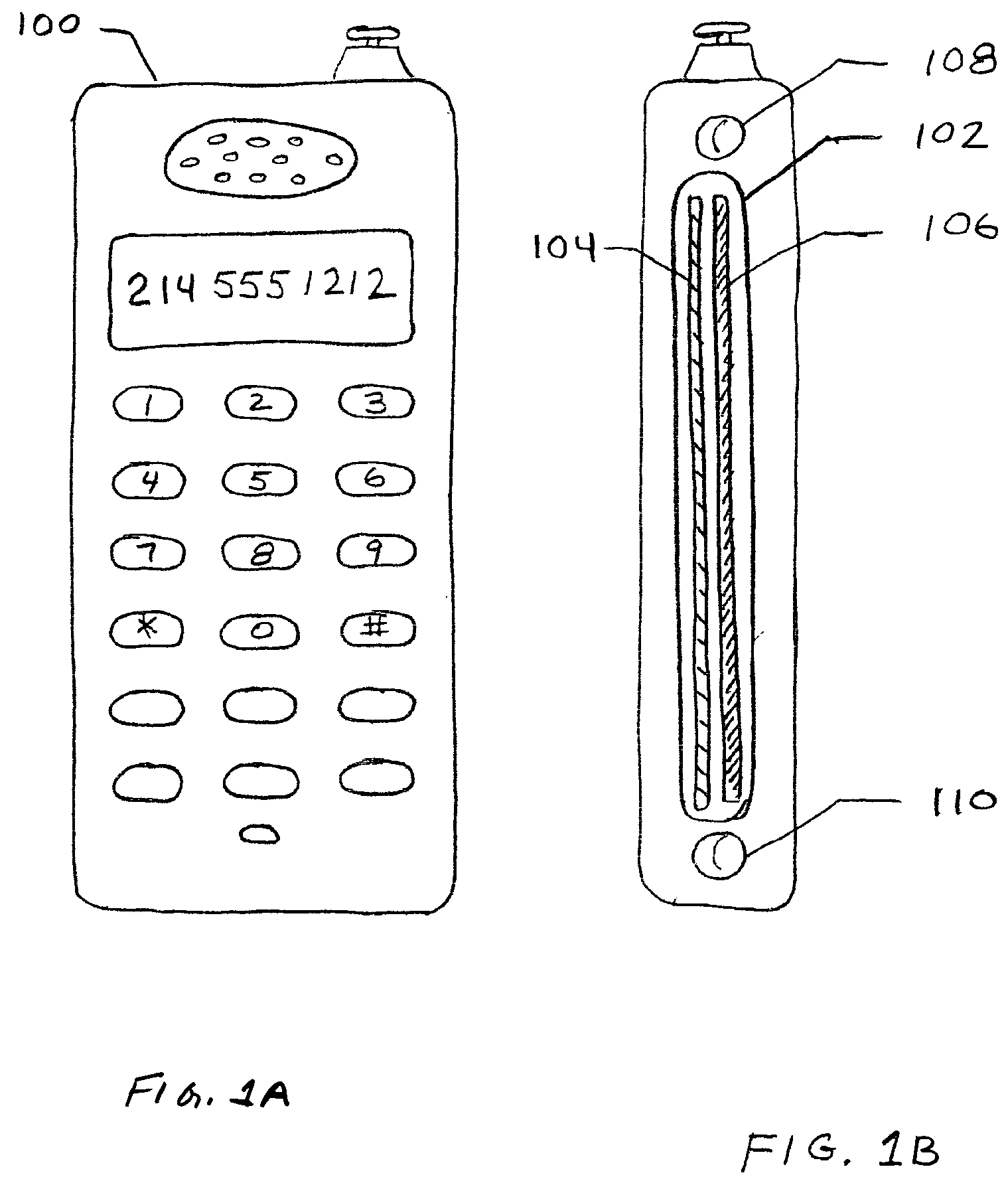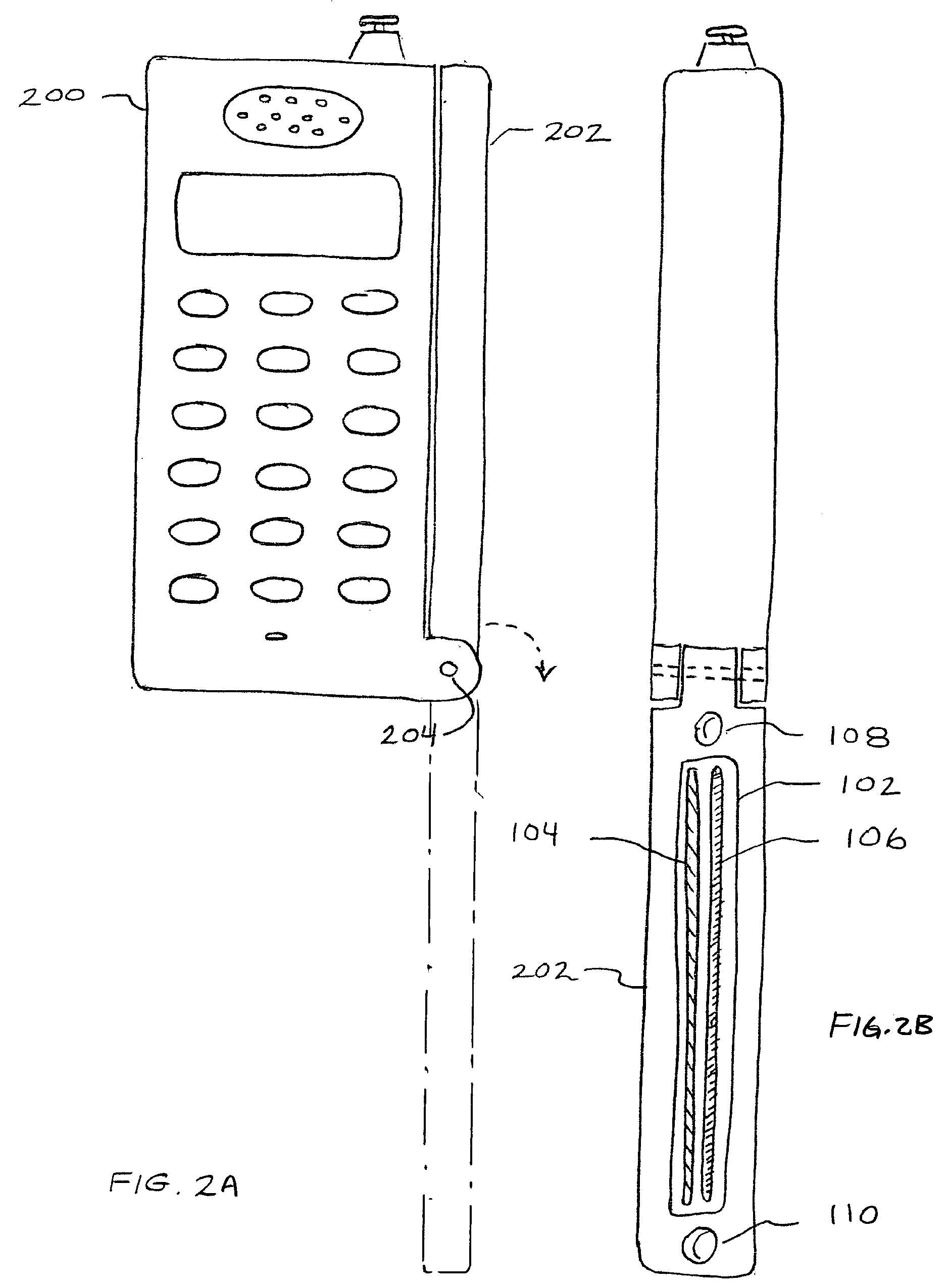Cellular phone with scanning capability
a technology of scanning capability and cellular phone, which is applied in the field of wireless telephony, can solve the problems of inability to provide, inconvenient use, and inability to close focus capability
- Summary
- Abstract
- Description
- Claims
- Application Information
AI Technical Summary
Benefits of technology
Problems solved by technology
Method used
Image
Examples
Embodiment Construction
[0022] An embodiment of cellular phone with scanning capability shown in FIGS. 1A and 1B has scanner optics integrated within one side of the main housing of a cellular phone 100. The illustrated scanner optics includes a linear array 106 of photosensitive elements, having, for example, approximately 200 sensing elements per inch of span. A transparent optical window or lens cover 102 is positioned over the array to protect the sensing elements and to set the spacing distance between the scanned document or other media and the sensing elements as the side edge of the phone is pressed against the media for scanning. Ambient light or light from an internal source 104 is reflected from the document and is coupled to the sensor array 106.
[0023] The scanned media (for example, a document sheet of letter sized paper) will typically be larger than the field of view span of the scanner array 106, so multiple passes must be made across the media to capture the full view. This can be done by...
PUM
 Login to View More
Login to View More Abstract
Description
Claims
Application Information
 Login to View More
Login to View More - R&D
- Intellectual Property
- Life Sciences
- Materials
- Tech Scout
- Unparalleled Data Quality
- Higher Quality Content
- 60% Fewer Hallucinations
Browse by: Latest US Patents, China's latest patents, Technical Efficacy Thesaurus, Application Domain, Technology Topic, Popular Technical Reports.
© 2025 PatSnap. All rights reserved.Legal|Privacy policy|Modern Slavery Act Transparency Statement|Sitemap|About US| Contact US: help@patsnap.com



